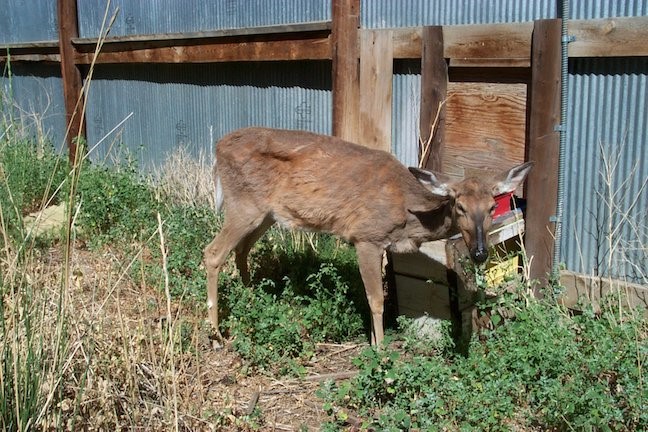CWD experts issue call for action
Several immediate steps recommended to limit spread of chronic wasting disease among wildlife and domesticated animals.
July 25, 2019

A team of national and state experts in public health, wildlife diseases, prion research and laboratory diagnosis is urgently calling for a comprehensive national strategy to reduce the risk for human exposure to chronic wasting disease (CWD) and to limit the risk of transmission of CWD among wildlife — particularly cervids — and domesticated animals, according to an announcement from the University of Minnesota.
CWD is a prion-related transmissible spongiform encephalopathy of cervids, including deer, elk, reindeer, sika deer and moose. CWD has been confirmed in at least 26 U.S. states, three Canadian provinces, South Korea, Finland, Norway and Sweden, with a notable increase in the past five years, the announcement said.
The continued geographic spread of this disease increases the frequency of exposure to CWD prions among cervids, humans and other animal species, the announcement said. Although CWD has not yet been found to cause infections in humans, numerous health agencies advise that people should not consume CWD-positive animals.
The team of experts is from the Center for Infectious Disease Research & Policy (CIDRAP) at the University of Minnesota, as part of its Chronic Wasting Disease Response, Research & Policy Program; the Prion Research Center at Colorado State University; the National Prion Disease Pathology Surveillance Center at Case Western Reserve University, and the Minnesota Department of Health.
The team recommends several immediate steps that need to be taken to address this potential health crisis. The steps were published in the journal mBio by the American Society for Microbiology.
“We have learned a lot about CWD in deer and elk over the past several decades, but we now realize how much more we need to know to control its rapid spread and devastating impact in cervids,” said lead author Michael T. Osterholm, University of Minnesota regents professor, McKnight presidential endowed chair in public health and CIDRAP director. “We must understand the risk of transmission of CWD prions to humans with the ever-increasing consumption of infected venison and how we reduce the possibility that, one day, we may have a tragic replay of a bovine spongiform encephalopathy or mad cow disease-like scenario in North America.”
The groups called for the following actions:
* Investing in CWD research. Adequate federal support allows state wildlife, animal health and public health agencies to enhance hunter education and better develop and conduct comprehensive CWD management plans.
* Enhancing mandatory CWD cervid testing. Mandatory testing of killed or dead cervids in all areas of endemicity and establishing associated monitoring systems that can be shared across states would provide more accurate data for wildlife managers and public policy-makers. Improved surveillance would also foster more efficient responses and help prevent disease spread among cervids. Additionally, mandatory testing results in hunters knowing if consumption of their hunted cervid will expose them to CWD prions.
“Adoption of more sensitive, next-generation diagnostic tests could identify early-stage and non-clinical ‘carrier’ animals that likely contribute to direct and indirect transmission and environmental contamination that may be accelerating CWD spread,” said co-author Mark Zabel, professor in the Colorado State University College of Veterinary Medicine & Biomedical Sciences and associate director of the Prion Research Center. “Identifying infected animals earlier could reduce environmental prion loads and save additional animals from this deadly disease.”
* Improving cervid management. The Association of Fish & Wildlife Agencies has published best CWD management practices based on current science. These practices — including the movement of live cervids, carcass disposal and feeding/baiting — need to be implemented by states as soon as possible to improve the health of wild and farm-raised cervids and protect the nearly $40 billion annual contribution of wild cervid hunting in the U.S.
* Heightened surveillance of human prion diseases to determine if CWD is transmissible to people. It is imperative that the U.S. Centers for Disease Control & Prevention continue its epidemiologic surveillance of human prion disease, especially in CWD-endemic states. The only way to determine the etiology of prion disease in humans is via postmortem analysis of brain tissue. Hence, it is crucial to continue neuropathological surveillance of patients with suspected prion disease to help determine whether or not CWD is transmissible to people.
“Properly addressing CWD will require a multidisciplinary approach. Engagement with the animal and hunter community, as well as continued long-term funding for human prion disease surveillance, will be required to address the many questions that CWD raises,” said co-author Brian Appleby, an associate professor in the School of Medicine and director of the National Prion Disease Pathology Surveillance Center at Case Western Reserve University.
You May Also Like


